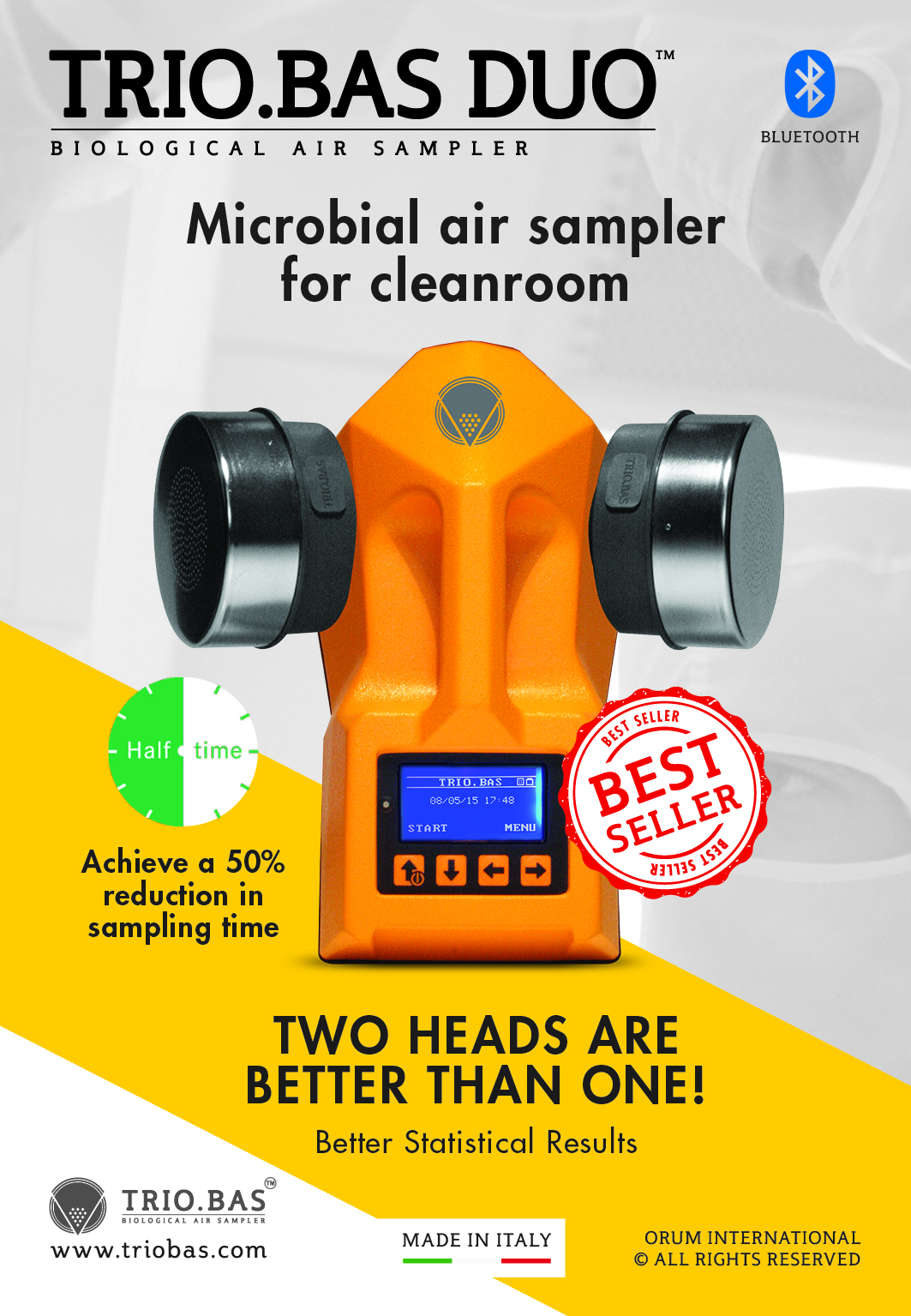Application Note – Bioaerosol N.27 – Mapping for the Microbiological Environmental condition monitoring in food production

It has been recommended that food processing plants adopt air monitoring programs to detect possible contamination sources in their regular HACCP program.
Juice, ready-to-eat foods, pasta, meat, dairy and other food processing facilities have been advised to establish a system for weekly air monitoring. Air sampling of various areas (finished product, protein, fresh produce areas, etc.) yield information as to possible microbial contamination. That is to say, knowing the microbial population, number of colony forming units per cubic meter of air (CFU/m3) of a given area can be predictive of possible food contamination possibilities, e.g., yeast, molds, and pathogens.
• Areas of risk
First identify location of areas of risk in both raw and finished product sites. Second, using the “SAS” air sampler, monitor these risk areas weekly to determine if the risk is real. These risk areas could be any place where air may come from heat or air conditioning or where people move in and out.
• Spatial maps
The use of spatial mapping aids in the interpretation of these data and is a visual tool easily showing increases or decreases in CFU/m3. Air handling is critical to these areas, however, without adequate monitoring of the air, there is no way to assure that the air treatment is indeed effective.
Also, without this somewhat simple testing, companies are not even aware that there are contamination issues, until a customer calls with a quality complaint, a notable loss in product shelf life or possible Product Recall. The following air sampling regime is suggested:
• Ten (10) foot diameter samples should be taken from a given area.
• Sample from 50 to 500 liters of air over a specific media, e.g., PDA for molds, SMA for general microbial population.
• Incubate appropriately then read each plate and record the results.
• Map these results, as stated earlier spatial mapping is the ideal way to display these results.
• Compare the before and after air treatment result, as well as ongoing sampling (weekly or monthly).
• When counts >300 CFU/m3 are found a described corrective action should be implemented and then the resample the air in the storage area.
• The above is an approved validation for any USDA/FDA HACCP Program.
• References
U.S. Department of Labor, OSHA, Safety and Health Topics, Sampling & Analytical Methods, Evaluation Guidelines for Surface Sampling Methods. Falkenberg, R. L. “Spatial Analysis of Food Facilities.” Geospatial Solutions. Pg 14, July 2004. Devico, Norma Jean. Gotta See It To Believe It. Food Quality. July/August 2002. Kirsch, Lee.” Fundamentals of an Environmental Monitoring Program.” PDA Journal of Pharmaceutical Science and Technology. Vol. 55 No. 5 September/October 2001. Wester, R.; Hui, X.: Landry, T.; Maibach, H. “In Vivo Evaluation of MDI Skin Decontamination Procedures,” Department of Dermatology, UCSF; Health and Environmental Research Laboratory, The Dow Chemical Co., Presented at Polyurethanes Expo. 1998.

















